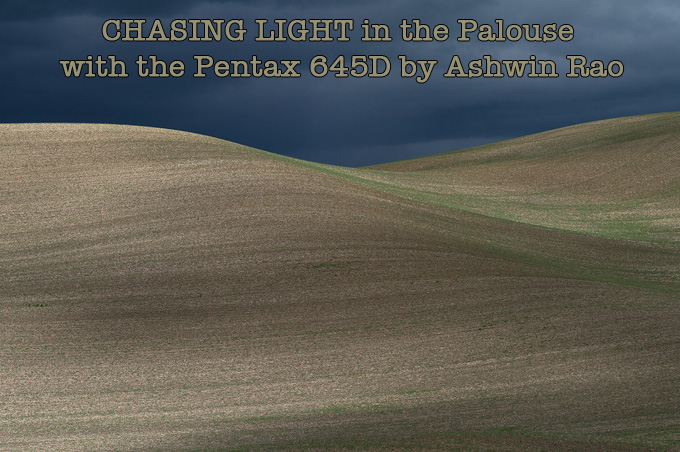
Chasing Light in The Palouse with the Pentax 645D
(& A Brief Review of the Pentax 645D system)
By Ashwin Rao – Visit his blog HERE
The Palouse… Eastern Washington’s pastoral land of rolling hills, has long been a source of photographic inspiration and pilgrimage. It’s a land replete with broad swaths of color, vistas with horizons that stretch into an endless distance, gently undulating fields of grain, crumbling barns, and giant machines processing the land’s primary industry of grain harvest. Type the word “Palouse” into your browser, and you yourself may be inspired to travel to this beautiful land, situated along the far sound and east of Washington’s boundaries, crossing into Idaho and Oregon. It’s but a five-hour car ride from Seattle, and yet, in a decade spent living in the Emerald City, I had never made the trip to the Palouse until recently. And now, the call of the glorious land reaches back to me.
The inspiration for my trip, of all things, was a change in gear. For many years, I have been a rangefinder shooter, but prior to this time, the DSLR and landscape photography had been my principal passions. As the rangefinder ethos grabbed a firm hold of my soul, my photography drifted towards a more photojournalistic approach, with attempts to capture tiny slices of life in meaningful ways. I had kept a Pentax K5 in my kit for over a year for the rare times where an SLR would see more practical use for a particular assignment of photographic task. And one day, while at my local camera store, Glazer’s Camera in Seattle, WA, I stumbled upon a “find” that jogged my sensibilities…a lightly used, nearly pristine Pentax 645D, priced to sell….and suddenly the gearhead’s dilemma and GAS confronted me. Until this time, I had considered medium format digital photography to be out of my reach financially, lest I up and sell my M9 kit, something I’d not be willing to do. So I was content to view others’ fabulous medium format images and hope that one day, such a camera would fall to my price point. Turns out that this was my lucky day. I quickly travelled home, gathered my K5 kit, and promptly traded it towards the 645D, Pentax’s clever entry into medium format.
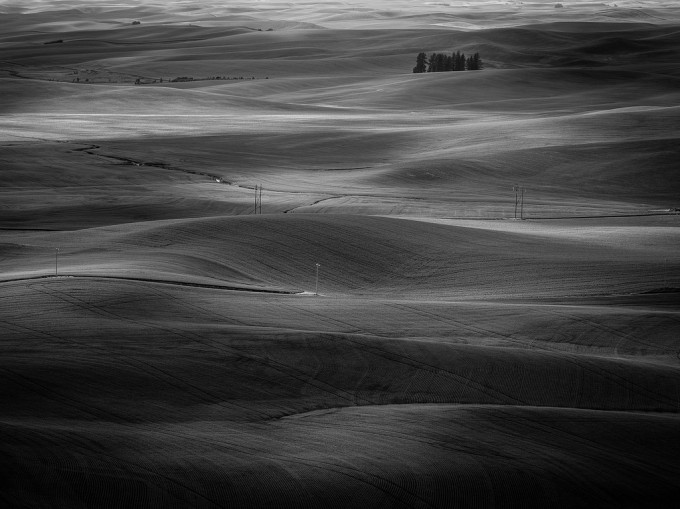
For those of you who aren’t aware of the Pentax 645D, here’s a quick overview. It costs $10,000 new as of this writing, and can be had on the used market for around $7,000-$8000, possibly less. The sensor is a lovely 40 megapixel 44 x 33 mm CCD sensor produced by Kodak, which thankfully lacks any anti-aliasing filter., thus preserving the native detail of this conventional Bayer-arrayed sensor. Thus, the images that the camera is capable of producing can rival that of the Leica S2, which has a similar sensor (quality of lens notwithstanding). In fact, there are reports out there that the Leica S2 and Pentax 645D share a nearly identical sensor. Added charms of the 645D include weather sealing (with the appropriate lens) and compatibility with the full lineup of prior Pentax 645 lenses. When compared to the film Pentax 645, one must account for a 1.3x crop factor when using the same lenses, as the sensor in the 645D is 1.3x smaller in surface area than its film counterpart. In contrast, the sensor is 1.25x larger than a full frame 35 mm sensor, providing that much more real estate over which to spread its 40 megapixels. The 645D is capable of ISO’s ranging from 200 to 1600, and it does remarkably well in suppressing noise over this entire range of ISO, without introducing processing/smearing artifacts. The Pentax 645D was initially made available only to the Japanese market for nearly a year after its initial introduction, but it has been available in the U.S. since the early spring of 2011. Other features include a high-resolution 921K dot, 3 inch LCD and a menu layout that is the same as found in the Pentax K5. To boot, it takes the same batteries as the K5 and uses dual SD cards, accepting SD, SDHC, and SDXC cards without issue. It’s not the fastest camera in the world, with regards to buffer or shot to shot performance, churning out 1.1 Frames per second. However, given its intuitive, SLR-like layout, ergonomic design, weather sealing, and “fast” (for medium format) performance, it’s gained a bit of a cult following in the medium format world for being a workhorse camera capable of excellent results. Additionally, Pentax 645 lenses have long been regarded as price-performance champs in the medium format world, coming in at prices far lower than comparable lenses in the Hasselblad, Leica and Mamiya lineups.
Some of you who inhabit popular gear forums have no doubt heard of the stir that the Nikon D800 and D800E have provided to landscape and commercial photographers, many whom use medium format for their work. For pro work, commercial fashion, print, and landscape work has long necessitated the use of medium format (and large format) sensors to optimize capture of detail, tonal rendition, dynamic range, and image size necessary for commercial and print work. With the Nikon D800 and its “sans AA filter” version, the D800E, the commercial and landscape world has been suddenly challenged by a new option, far cheaper (in terms of body cost), with a wider array of lenses capable of producing remarkable pixel-level detail required for this type of work, and some say, rivaling medium format. In fact, many individuals are jumping ship from medium format to join the Nikon fray, to provide them with the flexibility of that system, along with better high ISO capacity. Why then, did I disregard this exodus and jump onto a purportedly sinking medium format ship?
[ad#Adsense Blog Sq Embed Image]
Well, actually, the answer boiled down to price and a desire to try something new. SLR’s have been a “been there-done that” thing for me for some time now, and while the D800E would offer the benefit of superior image quality and clarity coupled with 36 plus megapixels of imaging goodness, it still possesses a sensor with far less real estate (by a factor of 1.5) than the sensor provided in the Pentax 645D. Second: Lens prices. After contemplating the price of the 645D, I naturally began an assessment as to how much it would cost to assemble a kit worthy of this sensor. Would lenses be pricey and add dramatically to the cost of my kit? In fact, many excellent Pentax lenses can be found used for between $150 and $650 dollars. I was able to gather a lens kit that included a 35 mm f/3.5 (28 mm 35 mm equivocal focal length), 75 mm f/2.8, 45 mm -85 mm f/4.5 zoon, 120 mm f/4 Macro (one of the best lenses ever made for medium format by many accounts), 150 mm f/2.8, and 400 mm f/5.6 lenses, for less that $3,000 USD. If I had elected to purchase only manual focus glass, I could have saved at least half of that price and spent $1,500 to assemble a high quality kit for my camera. It’s kind of mind-blowing, actually, how well priced heritage Pentax 645 glass is.
In order to purchase a Nikon D800E along with lenses of comparable focal length capable of resolving on its sensor (i.e. high end Nikon glass with nano crystal coatings, or Zeiss ZF glass), I would have had to spend more on lenses..well, truth be told far more…here’s a run down, just for fun (keeping in mind that medium format lenses are not nearly as fast/wide aperture as 35 mm equiv lenses, yet allow shallower DOF for any given focal length. Thus the comparison below is admittedly artificial, but would likely give you perspective on price differential for the “best” option for each system at each 35 mm focal length equivalent. This was the process that I went through, essentially trying to compare the best lens option at each focal length for each system, looking at typical lens prices on the open market
| 35 mm equiv focal length | Pentax A or FA lens (MF/AF) | Pentax price | Nikon/Zeiss high end lens | Nikon price |
| 28 mm | 35 mm f/3.5 A | $ 600-$ 800 | 24 mm or 28 mm f/1.4 | $2000-2500 |
| 35 mm | 45-85 mm f/4.5 FA (considered the best option at this focal length, better than the 45 mm f/2.8 FA prime | $ 600 | 35 mm f/1.5 | $1,650 |
| 50 mm | 75 mm f/2.8 FA | $ 400 | Nikon 50 mm f/1.4 | $400-500 |
| 90 mm/macro | 120 mm f/4 macro A | $ 300-400 | Zeiss 100 mm f/2 Makro Planar | $1800 |
| 135 mm | 150 mm f/2.8 FA | $ 500 | Nikon 135 mm f/2 DC | $1,300 |
| 300 mm | 400 mm f/5.6 FA | $1200 | Nikon 300 mm f/4 | $1200 |
If you do the math, you can imagine that for an equivalent kit, the price of the Nikon body ($3,300 as of this writing) plus lenses is at least comparable to the price of a used 645D with the lenses assembled above. The issue for gearheads like me would be that the Nikon system offers many other tantalizing options, including lovely zooms, tilt-shift lenses, and other options, for which the cost would continue to mount. The Pentax 645D is a far more limited system, in terms of lens diversity, and most lenses are cheaper or of equivalent price to their FX Nikon lens counterparts…what is lost is Nikon’s high ISO capabilities, size benefit, and lens flexibility. What is gained is a larger sensor and the medium format look….I decided to jump onto the Pentax 645D kit, for better or for worse.
A Bit About the Palouse
So, with that quick review of my decision to invest in this system aside, it was off to the Palouse to see if the Pentax 645D was capable of delivering excellent results with the lenses that I had purchased for the system. For those of you who have never been or heard of this region, the Palouse encompasses parts of Souteastern Washington, northwestern Idaho, and northeastern Oregon. It is a major agricultural region producing wheat and various other crops. The region is also crossed by the Snake River and crosses over with Walla Walla, a region known for it’s lovely wines. It’s through that the regions dune-like geographic formations were formed during the ice ages, cast from the glacial outwash plains. For years, the Palouse has served as a scenic pilgrimage for landscape photographers for its dramatic and unique geography, and it has long been a beck and call for me, as I mentioned above. Thus, I assembled a crew of like-minded photographers, all whom had previously attended one of Steve’s workshops here in Seattle,.All are now friends within Seattle’s Leica users community. From Seattle, it is a 4.5 journey by car to the western edge of the region. Once there, we were met by a talented local photographer, Ryan McGinty, a friend of mine from Flickr (who also came to know of me through Steve’s site), who has lived in the region for many years and magnificently photographs this region through a well-trained and creative set of eyes. For any of you who haven’t had a chance, please check out Ryan’s images on flickr. You are in for a treat, and you will see the possibilities that this wonderful land has to offer through his images:
http://www.flickr.com/photos/ryanmcginty/
Our journey to the Palouse began along Washington State Route 26, which is the primary byway that brings people into the heart of the Palouse region from the West. From there, we stopped for breakfast in Colfax, and began a lovely loupe through the scenic byways of the Palouse. During our brief, 24 hour stay in the region, we visited many sites along state routes 27,272, 95, and 195. We passed through the towns of Palouse, Garfield, Colfax, Farmington, Pullman, La Cross, and others. We climbed Steptoe Butte to gather in views of the entire region. Along the way, there were old, abandoned barns, farmhouses left behind, windmills, grain silos, winding roads and paths, statuesque trees, horses and lifestock, and endless fields of grain. At the time of year (June), the color palette was principally made up fo blue, green, gold, with hints of brown, and occasional reds. The chance of the occasional thunder/lightning storm will bring darker swaths of blue, maroon, and magenta into the color mix of the Palouse palette, and evening light can add warm yellows, pinks, and pastels. Wildflowers would sprinkle in occasional batches of vivid color now and again, but by and large, this is a land to be taken in macroscopically at first glance (microscopic will come later)….
The wonderful thing about the region that we saw is that there is usually a remarkable vista over every hill, expanding out towards most horizons. In front of us were endless rolling hills, sunbreaks and cloud shadows spotting and colorizing the views in front of us to add drama. Further, unlike many regions here, the cloud patterns are truly dramatic, with cloud formations ranging from statuesque cumulonimbus and cumulus clouds to wispy cirrus & stratus clouds, providing ever-shifting perspectives of the scenes in front of us. In a very tangible way. We were busy chasing the right types of light as the day passed, sometimes as the contrast, clarity, color, and luminance changed from moment to moment. It was an exhilarating experience for me, a suddenly eager landscape photographer.
The 645D in the Palouse- A New User Experience
I was very excited to use the Pentax 645D in ths majestic landscape. Along with me came a range of lenses from a 35 mm f/3.5 A (28 mm equivalent in full frame) to a 400 mm f/5.6 (320 mm equiv in full frame). I was excited to use the wider lenses to get close and capture scope, while using my telephoto lenses to compress landscapes, while reaching out to grab far away details. Along the way, I did a bit of chimping on the 645D’s wonderful LCD screen, but my and large, I let fate do the talking hoping that the images that I acquired would be in focus, thus allowing all 40 million pixels to shine. Would these older, heritage lenses hold up? After all, Pentax has only unleashed 2 new lenses, a 55 mm FA and 25 mm FA lens, since the Pentax 645D was released. All other glass available to the camera has been present long since the advent of digital photography. IF there’s one lesson to be learned, it’s that digital photography can bring out all of the flaws and softness inherent to imprecise or imperfect lens design or compatibility with the digital sensor. Did my kit of assembled heritage glass work out okay? The answer is…..
A RESOUNDING YES!
I’m psyched. I came home and began to edit my photos on my NEC 27 inch high gamut dual displays, and wham, there it was…detail….lots and lots of detail. The heritage glass did marvelously on the digital sensor, and I must say that I have been more than satisfied the Pentax 645D’s output.
Most images were shot at lower ISO’s, from 200-400, as I had the benefit of a nice tripod (Gitzo 3541L) and ballhead (Arcatech) to stabilize my kit. It should be noted that the 645D incorporates 2 tripod mounts, so that if you add 2 really right stuff brackets to the body, you can rapidly change the camera from portrait to landscape orientation.
The 645D is capable of resolving tiny details at near and far distances. Tiny blades of grass come to life just as much as enormous silos. The Kodak CCD’s sensor (No AA filter) produces remarkable detail, and to my eyes, there’s adequate dynamic range to rescue highlights and shadows in post-processing. White balance is a bit challenged on this camera, however, and thus it would make the most sense to shoot in RAW and post process afterwards.
Speaking of RAW files, they are huge, providing 7264 x 5540 pixels of real estate and file sizes of 80 mb or more. Thus, if you are shooting RAW, make sure to bring adequate memory. I used 16 GB SDHC cards for this trip, but on returning home, I promptly purchased two 32 GB SDHC cards (SanDisk Extreme 45 mb/s) to use and not worry about space.
For the most part, I tried to operate in the wheelhouse apertures of these lenses, stopped down to between f/5.6 and f/11, though I found that Pentax 645 lenses perform admirably even wide open.
Many of you may ask if I am happy with my decision to purchase into this system. Does the medium format experience bond well with a Leica M street photographer? Are the file qualities up to snuff, once one has tasted the M9’s sans-AA filter experience? All that I can say is that I am profoundly satisfied, enough to disregard the Nikon D800, as I am unsure what more image quality that camera can offer, especially given that my trip to the Palouse proved to me that 645 lenses are up to the task of critical digital workflow. Further, I hope that the images provided in this user-experience review communicate how I feel about the camera, and to some degree, what type of image quality the camera is capable of.
Concluding thoughts and comments
The Palouse is a beautiful region to visit. It should be on your bucket list, if you are a serious landscape photographer or lover of pastoral scenery. Shooting the region with a Pentax 645D in hand (and on tripod) was a pleasure, and I look forward to returning during another season, when the colors offer a different palate and perspective.Along the way, I found that I was very much impressed by the output of the 645D and its heritage lenses, and I look forward to planning future trips for which the 645D will be taken. I found that the medium format experience is one that can be embraced by someone used to hand holding a discrete kit, when the right opportunity presents itself.
Is the Pentax 645D right for you? Only you can make that decision. For those of you considering a Nikon D800/E for landscape or portrait needs, you may want to consider buying into the Pentax 645D system for a similar cost (depending on your lens selections), as you will be duly rewarded by outstanding image quality, pixel clarity and sharpness, and enormous sensor real-estate.
(From Steve: Anyone interested in a Palouse workshop? A couple of days shooting, learning and getting some amazing images in this beautiful and breathtaking location? If yes, let me know in the comments! If there is enough interest we can set something up!)
645D pro’s
- Medium format – lots of sensor real estate for BIG prints and BIG crops
- 40 MP sensor without an anti-aliasing (blur) filter
- Useable ISO’s ranging from 200-1600
- Dual tripod mounts
- Excellent user interface & menu layout (best in class for medium format), making it an easy transition to those familiar with SLR’s and looking to make the jump
- Dual SD card slots
- Weather sealing (with an appropriate lens)
- Outstanding ergonomics (for a medium format camera), including a deeply recessed hand grip
- Cheap (relatively speaking) selection of Manual and Autofocus lenses, which perform admirably.
645D cons
- Limited ISO range compared to 35 mm
- Bulky (for a M9 user)
- Slow image preview times and buffer
- Slow FPS (1.1 frames/se) make sports or rapid street work difficult
- Care required to optimize sharpness (every tremble and shake can be easily seen at the pixel level). A stable is a must for critical work
- Limited number of vendors for Pentax, compared to Canon, Nikon, NEX, or m4/3
- No AA filter can mean “moire” artifacts are possible (less likely in landscape photography)

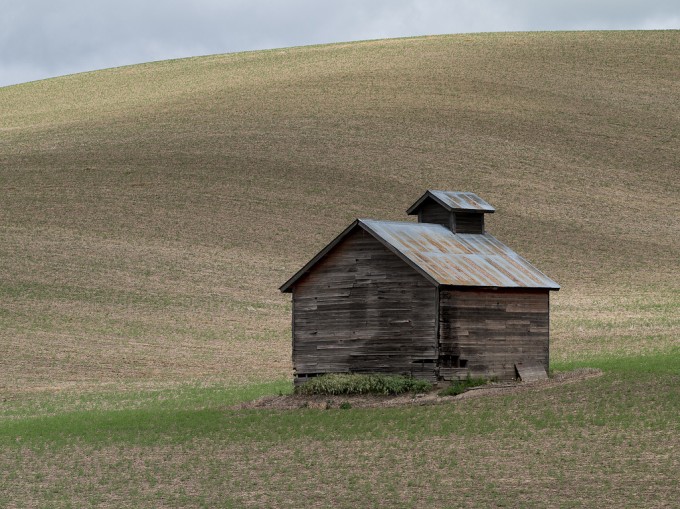
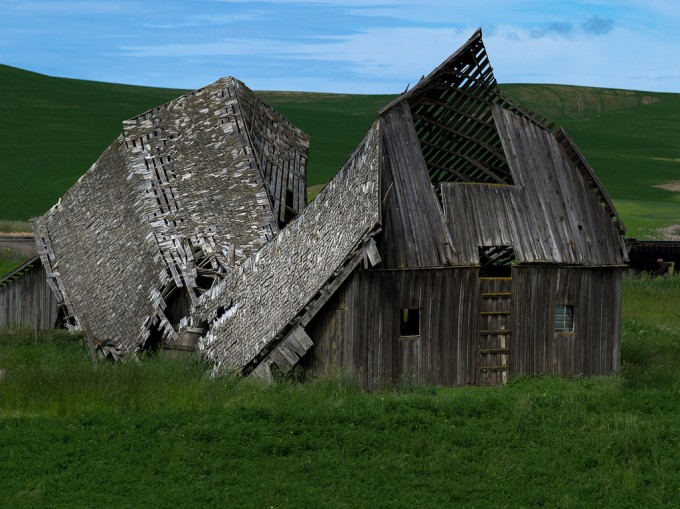


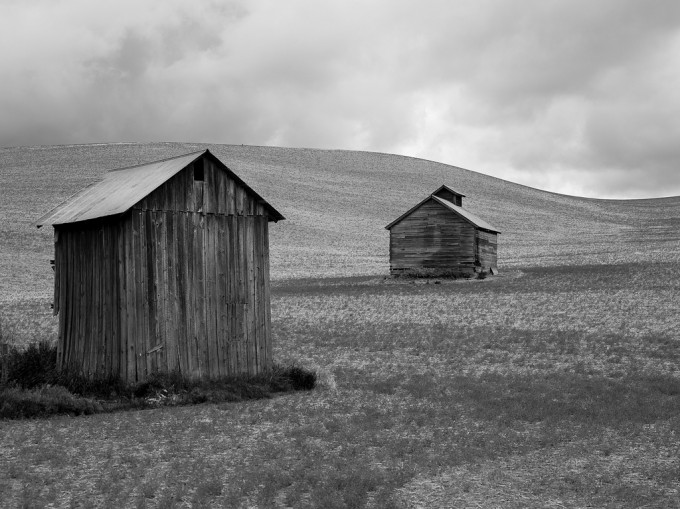
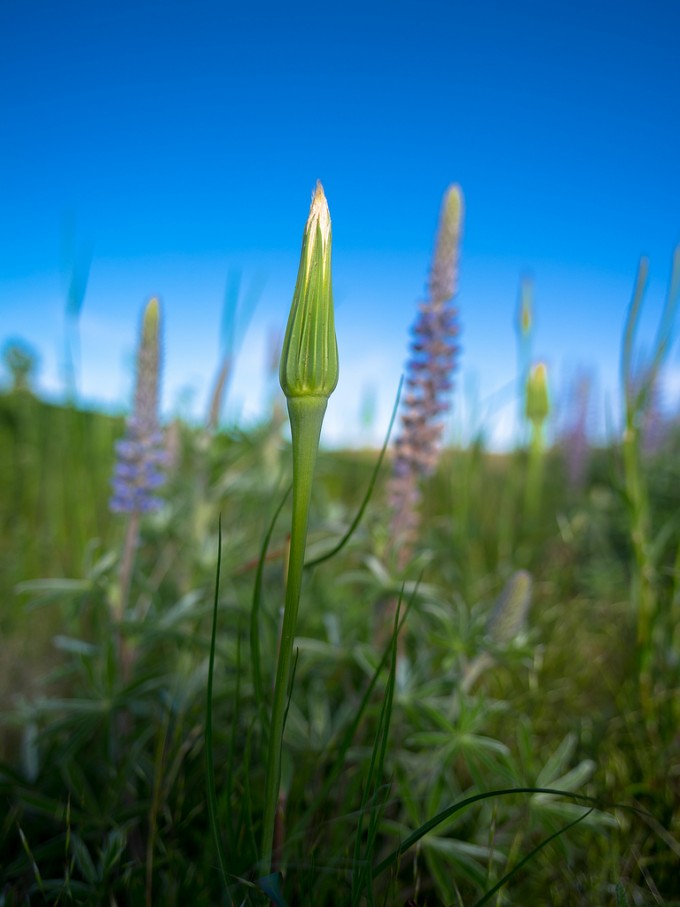
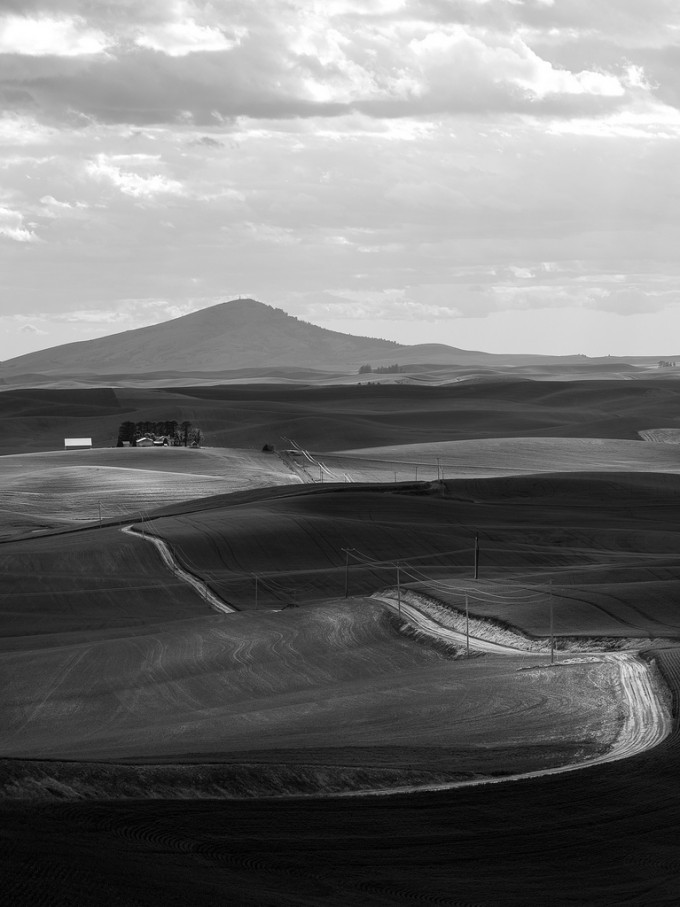
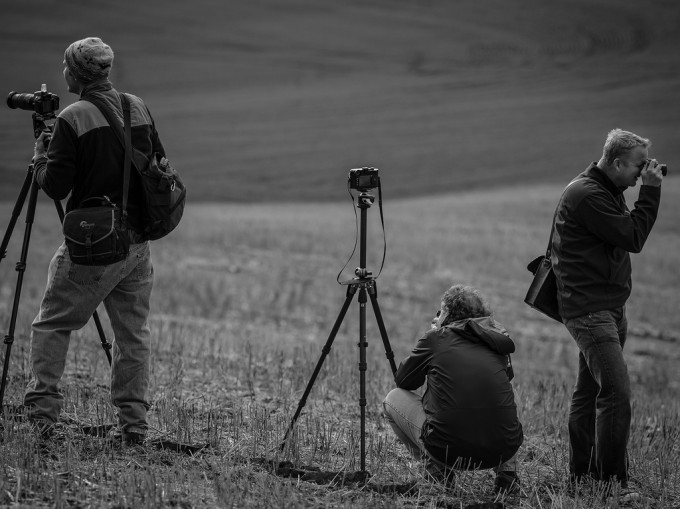
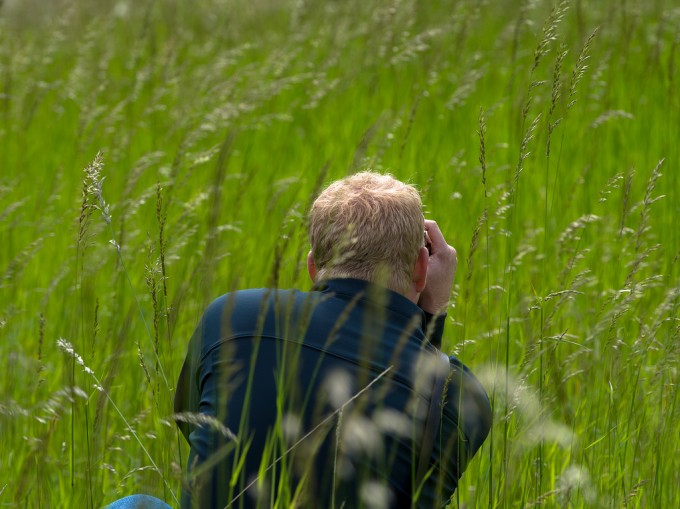
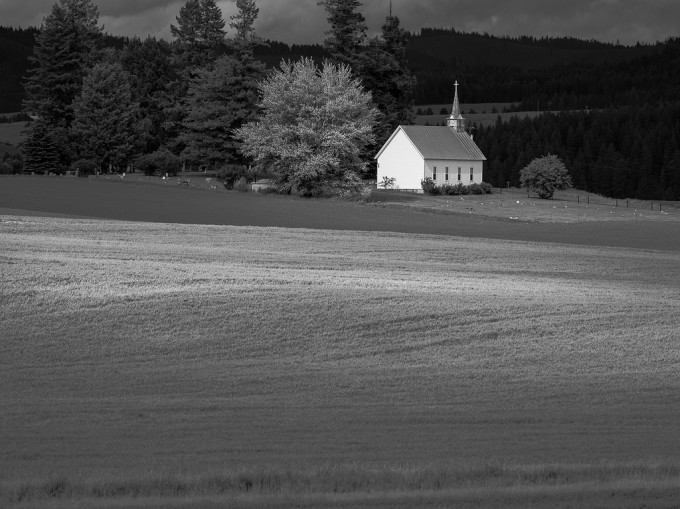
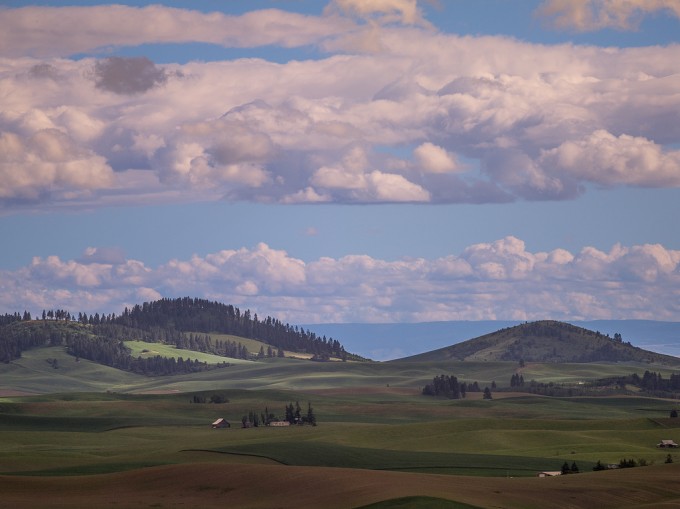
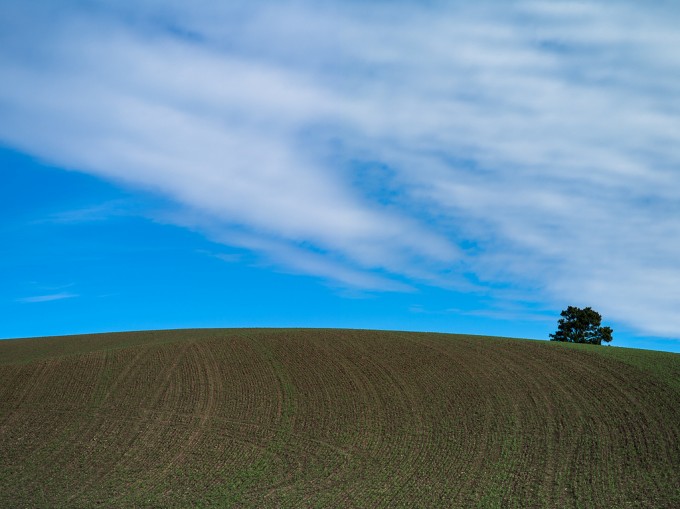
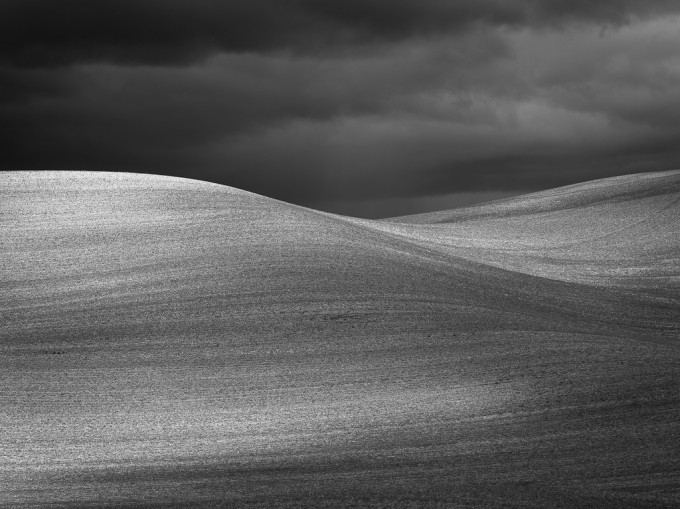
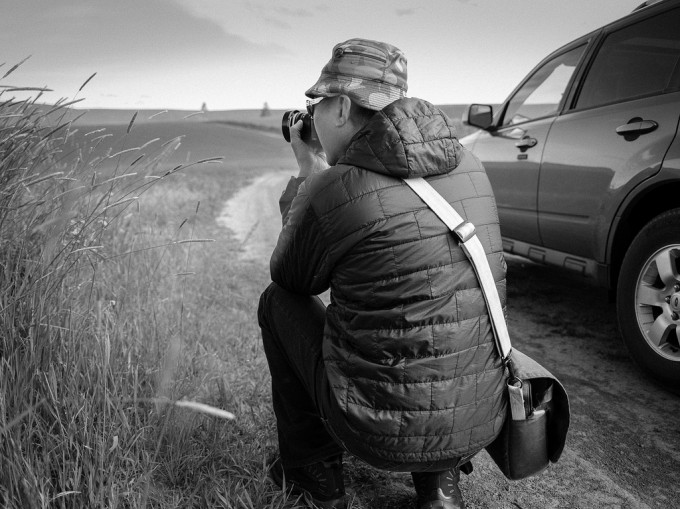
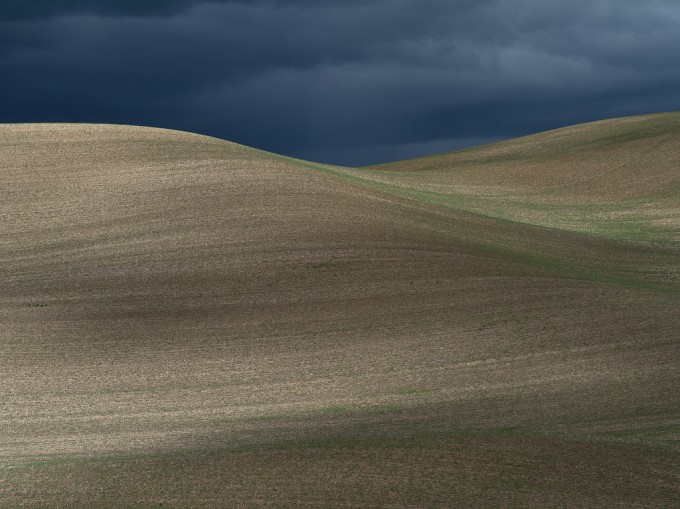
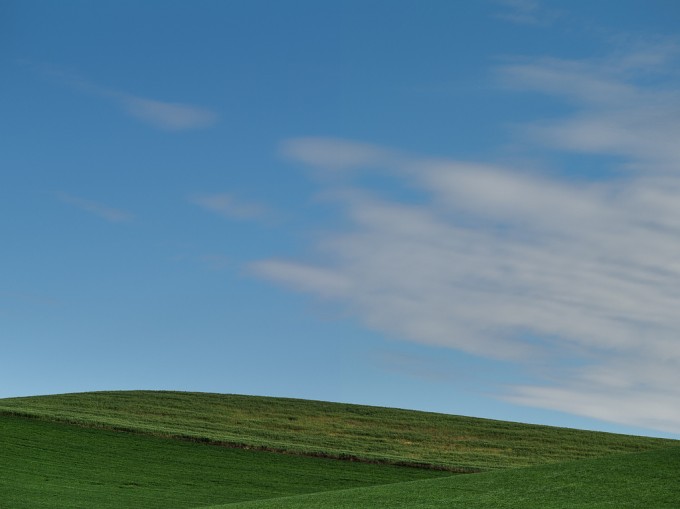
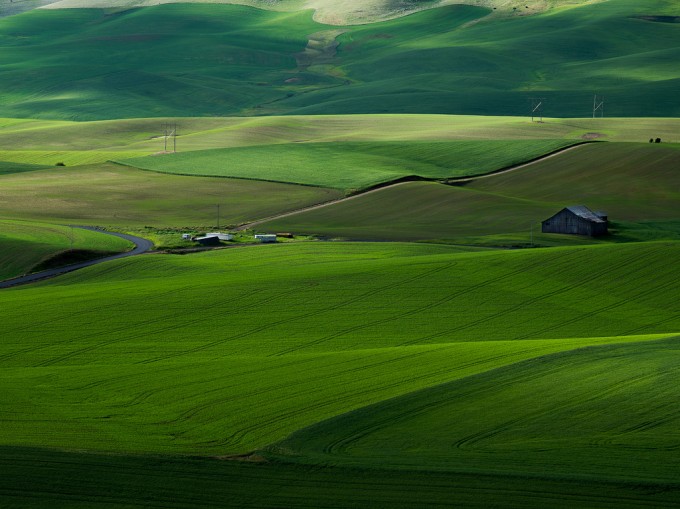
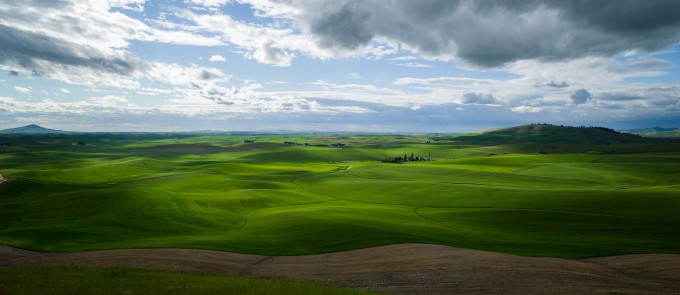
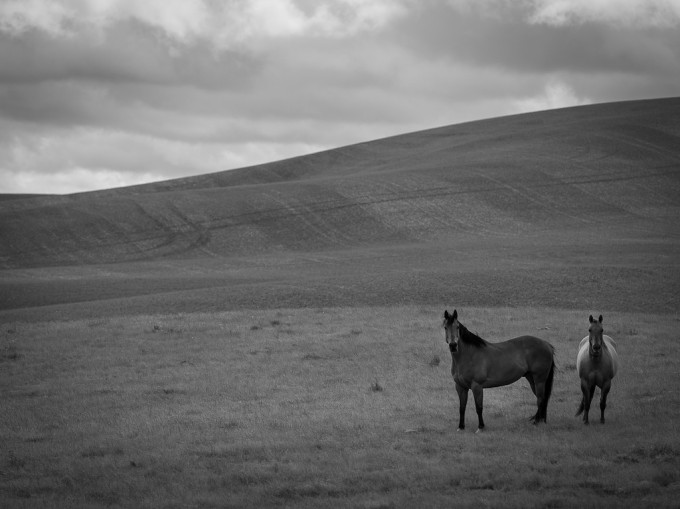

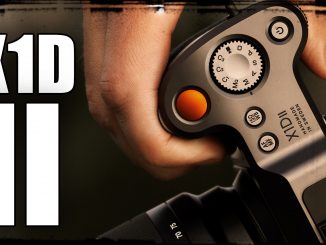
I am amazed that searching ashwin Rao’s blog for Pentax 645d produces no results whatsoever? After the gushing review on here, surely he hasn’t ditched The 645D already?
Nope. I use it regularly. I just don’t post images regularly with it….The 645D is incredible as a camera.
Ashwin, really great work. Wonderful light. I’d love to see how these print.
Let me give a nod to film as an economical way to try medium format. You can pick up a clean Pentax 645n film body for under $400 while you assemble a lens collection. $6000 buys a lot of film and scans!
Ashwin,
My friend, once again amazing images you have shared with us.
Face it my Ashwin, whether street photography with your M9 or landscape with your 645d kit, you have what most of us want skill and talent.
Great stuff and great review of the 645d, a camera I once owned but traded up to Sinar arTec, 3 lens kit and a used leaf Aptus II 7 back.
different strokes for different folks
Steven
Hi Ashwin
The biggest drawback with the 645D is that it is more expensive than an entry level Leaf Aptus II 5 back that will fit on a Mamiya, Hasselblad, Large Format camera, Phase One, Rollei etc. It’s a closed camera system with a smallish sensor as far as medium format goes.
The next problem with it is that it has a limited shutter life. I understand that the shutter lasts 50,000 cycles and then needs to be replaced. At least that is what I heard. Even so, 50,000 cycles ain’t bad. Just nothing spectacular.
Aside from that, it’s a great camera as your images show. For those of you out there that have not tried medium format digital, you are in a for a shock. If you think 35mm full frame is good, it’s pedestrian in front of medium format digital. No contest at low ISO. It’s near, if not as good as transparency film for colour and image rendition but not there as far as matching Velvia 50. Digital, I think is already sharper than most film.
The biggest draw back I found with medium format systems is that it really isn’t that good above ISO 200. I have a leaf Aptus II5 and I can vouch that at ISO 25, ISO 50 and ISO 100, it’s spectacular. Above that it’s soft and noisey. The super expensive systems will do better but then they are just that, super expensive. The Leica S2 is a bit of an exception which does ISO 640 (as Steve showed in his review) happily with super sharp images and without noise. But again you can’t mount it on a large format camera. Can’t have everything
I really need to get over to the Palouse region. Though it would be wasted on me, i’d still like to get there. Unfortunately, our car would probably croak half way there =o] I’ll just pretend i’m there with these images! The M9 images are astounding as well. That horizon is on fire!
Decide whether you are shooting color or B&W. Mixing just detracts here. Most don’t look sharp with a few that do. Why?
Look at the work of Don Kirby – 4×5 shooter, and see how well this can be done.
All are sharp on my monitor. Monitor and browser affect how they look. websized prints don’t really do the images justice…
What I like about the 645D is the increase in compression of elements in the scene because of the longer focal length for the equivalent angle of view . You don’t get this effect with MFT, APC or fullframe 35mm unless you pano stitch. To me it appears more natural to my eyes than the smaller formats. Ry
I dont quite understand what you are talking about here but I think 5-4 ration is also interesting , I personally prefer 16-9 ratio.
But I also think 3-2 ration is very boring.
one more thing I forgot is the D800 is much smaller and lighter ,especially used with primes.
one thing you did not realize or not aware of Nikon system is that the cheap f1.8 G series primes are actually as sharp or sharter than the f1.4 over priced prime line , really I tried to compare my AFS24f1.4G vsAFS28f1.8GED , AFS85f1.4G vs AFS85f1.4G and I sold f1.4 primes, I left my Zeiss 100 and 50Makro Planar , though.
So, your reasoning to go Pentax because it is cheaper as a whole system is wrong.
you also should have consider cheap Sigma 85f1.4HSM , 50f1.4 , both of Sigmas are optically better than both Zeiss and Nikon f1.4 85 and 50mm primes.
Plus, Zeiss f2 line are actually better than f1.4 line, with the 35f1.4Zeiss being rare exception case.
My rationale is mine, not wrong….it’s just not the rationale that you would use. I tend to desire the best glass at any particular focal lengths. It’s part of what attracted me to Leica (gear head, yeah, but also optimizing how I can see)..that being said, there are many cheap options at any given focal length for Nikon, so you are correct, the wiser and more frugal photographer than I could save money and go with a cost effective, smaller kit…However, I would hunt for fancy glass until I had a fancy kit, and It’d likely cost me a penny…and there are plenty of folks out there like me…I’m guilty as charged LOL…
But you are right, a D8000kit could be kept reasonably priced…but not my proposed kit LOL…
Great article and photos. The comparison with Nikon lens becomes less costly if you go
with manual focus AIS lens. I have 24,28,35, 50, 85 and 135 F2 lenses. The total cost on
Ebay was $1100.00. The used market can save you thousands. I own a 645 with the 35,
45,55,75 and 150 lens. It’s a great system. I wish I could afford a 645D.
Good luck with your photography. Regards, H. Payne
A great story. When should I go there to hit the best looking vibrant green fields and blue skies?
As far as the Pentax setup – it looks good, but there is simply no way I would go back
to a huge camera and lenses like that ever again…
Totally understand. I plan to use the Penta very selectively, due to its size and heft, but as far as medium format, it’s probably the most ergonomic, or at least one of the most ergonomic, options out there (S2 is another). THe M9 continues to be my principal option for photography, bu it’s nice to have this kit as an option
Hi Andrew, You have about two and half more weeks left till the fields really become golden. Below Moscow, Idaho the fields are just a few inches tall because of the late planting season. Around Steptoe Butte it will be a mix of tall green wheat with wheat starts planted a month ago. I’m expecting the harvest to begin late first week of August around Lewiston and highway 26. Usually the harvest begins mid to late August. So if your free for a few days get yourself here for the greens. Evening sunrises and sunsets have been spectacular lately. If you can catch the Palouse right after a storm that’s when you’ll have the best clouds and lighting for photos. Ashwin’s photos were taken right at the end of a storm passing through. The light we has was amazing. The next day you can see how the sky looked over the canola with the cotton ball clouds. If you want a real treat try night photography when there’s a new moon. The milky way is super clear and colorful. Ry
Ryan is the master of the Palouse. His advice is golden!!!
The details around the area of the horizon in those pictures is way too sharp for my liking.
Gosh, I’d prefer sharp than Out of focus in this case and I didn’t apply any sharpening….
Gee, im not saying that it would be better out of focus than sharp. my point is that details further away are always softer than the detail nearer..thats how the human eye sees things. the mountains in the background are not and shoul not be sharper or as sharp as the foreground. that gives the picture or view “depth.” otherwise, it will look like 2-d sheets of sharp pics plastered one over another. There is NOTHING wrong with details being soft, esp in areas that are further away from the foreground. It is not natural for details further away to be sharper and then the ones in the foreground. Sometimes a photograph should not look like a photograph.
Different stroks for different folks. No need to get worked about about it….I accept your proposition as yours, but I’ll keep mine. That’s why there are different styles of photography and photographers. Neither is correct. Both are interpretations of reality, as seen through different opinions and vantages points.
Different strokes for different folks. No need to get worked about about it….I accept your proposition as yours, but I’ll keep mine. That’s why there are different styles of photography and photographers. Neither is correct. Both are interpretations of reality, as seen through different opinions and vantages points.
worked up about it? nah. too sharp, thats all. i accept that some folks are shark hunters and others are sharp hunters. lol
You could pick up the new Nikon 28mm 1.8 and the Nikon 105mm Macro and save a couple thousand dollars on your calculated system cost.
Fair enough, but is the 105 Macro a DX lens? I am not as familiar with Nikon gear
No, the macro is FF and about $1000 I believe. All the Nikon macros are very good, so you could even get an older, non-VR macro.
Lovel images.
I agree with you that the Pentax 645D is an amazing camera. People just jump on the “Nikon D800 replaces MF” bandwagon without actually having any experience of the benefits of MF.
The DOF from the Pentax 645 is different to 35mm FF equivalent. The sensor is MUCH larger. And being a CCD without an AA filter, it also renders images with a different look than a CMOS sensor.
Given that the Leica M9 also uses CCD, I can see why you love the images from the Pentax.
I think you made a great choice. Maybe a choice I might follow you with someday, too…
For many of the kind of shots I take I would pick the Pentax over the Nikon D800e in a heartbeat.
Thanks, Rufus….The quest for the latest and greatest is a challenge that even I have to fight….what I have realized is that the quality of the heritage 645 lenses suffices for the current 40 mp medium format sensor…and I couldn’t imagine printing much bigger that the 645 would allow me to do.
you are also totally correct that there’s something about CCD sensors that I really enjoy. Not sure what it is, but the only CMOS that I have seen come close is the Fuji XPro-1’s….there’s a certain 3D’ed ness or sharpness, that may go beyond the AA filter. It could be placebo, but I’ll be curious how Leica lenses will perform on the M10’s CMOS sensor,a as it has been widely reported.
Great work as usual Ashwin. I’ll have to visit that area next time I’m up your way. I just love the photo of you in the field of flowers, makes me laugh every time I see it.
THanks, Todd. My classic “Ham it up” shot LOL
And by the way, I used your lens pouches for the trip, with regards to my Leica kit…great stuff!
Nice Ashwin, glad you like the Micro Lens Pouches!
Wonderful images Ashwin. I also live in Seattle. I have not be to Palouse as well maybe next week I got the weekend off and it will call for the trip :D! Or maybe Forks. I have been to the Gorge and Lincoln City on Oregon coast I have captured some beautiful images with my 5D there about 5 years ago.
Though I might ask why spend so much to get into mf? Contax 645 could be had for less and 645 is really close to 35mm. What intrigues me is the Mamiya 6×7 rangefinder or the Fuji. My pal has the 6×7 Fuji foldout rangefinder that Steve reviewed a while back. I know its film and all but they are still very capable tools. I always wanted to jump into MF but I took a plunge of the D800 and now waiting 6 months to get mine :/ but it will be a good partner to my D700
645D is nice but I just feel Nikon D800/E for half the price could do so much and about the same quality just less depth compared to MF due to obvious sensor size advantage (the bigger the better 😛 but 645s are not much larger than 35mm). It has no live view, and its pretty slow to write to the card and slow in responsiveness much slower than my M8 lol. I must admit the viewfinder is nothing full frame DSLRs can ever touch.
Though its just my opinion and it shouldn’t really matter as long as you love what you do with your gear and images you produce are breathtaking!
THanks, Leonard. I’ve done my job, if you head to the Palouse due in part to these images. It’s beautiful. The yellows will be gone, as those flowers (canola, other) will have wrapped up their cycle, but the wheat will be that much taller….lovely…
Hi Leonard, The weather been great lately in the Palouse. Definitely you should try to make it out here. Ry
A very nice and well rounded review. Thanks.
I have to confess however that I think I prefer the look of the Leica images.
Really in awe of how well you captured light. Looks like gorgeous countryside but it really shines with the composition of light and shadow. I hope to make it there someday.
With last one I mean the one at the end of the article with the dark sky and the shadows on those gentle hills.. Absolut beauty.
Congratulations on your purchase of the Pentax, and the beautiful photographs from your venture into the world of medium format.
I would love to see these as large prints, as I am sure the true quality is lost on the web.
As an aside, I have just purchased a Fuji X-Pro 1, and I am delighted with the camera and the quality of the files from it. The only problem seems to be the way Lightroom converts the RAW files, which seems to contain a sort of smearing effect (colours running into another).
I believe you own an X-Pro, and as you are a photographer with good technical knowledge I was wondering if you had any thoughts on this, and have come across the problem yourself.
I suppose we will have to wait for Adobe to get round the problem caused by this unconventional Fuji sensor, and until then jpegs are the order of the day, which are superb, but I do like working with RAW.
Best wishes.
Andrew
Beautiful images, Ashwin. MF does create a great quality. After having used a M9 for years I added a 80mp back to my camera set. Love it. Feels like using large format. I am currently strolling the streets of Cologne and I like setting up the tripod and composing a shot. It feels like making a piece of art versus snapping a shot. I still use a Nex 7 for walk around stuff. Please share more of your MF work as you generate it. D!RK
Ashwin, thank you. I can’t add anything other than that!
Dirk, could you elaborate (and maybe post some photos). I’m not familiar with digital cameras above 35mm; what exactly do you mean by adding a 80mp back? Adding to what?
Thanks and would be intrigued to see the results.
Hi Jon. I bought a digital back with 80 megapixel resolution that gets attached to medium format camera instead of a traditional film back.the sensor is almost 6×4.5 full frame. Quality of the files is amazing but it needs superb glass. The back can be attached to large format type cameras as well allowing for tilt and shift. Will post images soon on my blog. D!RK
Thank you.
Google shows a few blogs under “Dirk”. Please could you give a link.
Jon. You can always click on most names in everybodys comment header and it takes you to the weblinks and blogs. Just click on the bold Dirk on top of my comment. D!rk. Ps dont think that i have a MF sample on it yet
I absolutely love the last one. If you ever publish it on 500px I might by the digital copy. Very nice, really. Puts you on the ground and focuses the mind.
Ashwin
these pictures have a breathtaking clarity. I love those landscapes. You captured the ghost in the “machine”. I do not like the “snapshots” of the others, though but I understand them as a reportage. One gets a good feeling and orientation of the shoot and the set. A camera I dreamed of as well. I like the format, of course pictures can be cropped but I am oldschool and like to frame on the go.
Your article and the pictures provides is one of the best here on this site.
I would love to take part in a workshop! Great images my friend.
Ashwin….love that panoramic landscape of the hills/fields….just awesome!
Great work, all of it! I do see what Steven was talking about but only in 2 images, the mono pic of the three guys taking photos and the last one with the horses. They do look to be a bit dark. Of course, I don’t have a calibrated screen but the factory defaults are quite good, just a little on the cool side. Anyway, your images are stunning and it’s just far too difficult to pick a favorite. I don’t think I’ve ever seen that kind of green in a photo, the tonality is almost unreal. I would love to see what these would look like in a large print.
Great writeup Ashwin. It was a lot of fun meeting you, Andy, Matt and Ed. We were blessed with some great lighting that day. Each place we went the light just kept getting better. I look forward to photographing with you and the others again.
Thank you Steve for your site, it brings a lot people together to become friends. Let me know about the Palouse workshop, I’ll be glad to help out. Ry
Ashwin, you just put me back on the fence again. 645d or D800? 35mm dslr or MF? Ugh.
Breathtaking & inspiring images Ashwin! Both the color images and B&W jump off my screen … very nice!
I have salivated over the 645D ever since I heard of its release, but at the time a body + lenses was going to run at $15K – $20K.
I opted for the M9 instead (which I will NEVER part with), and just upgraded from a D700 to D800 last week for the work I do that requires a D-SLR. I’m getting some great images from the D800, but will delve into the world of medium format one day.
Thanks for sharing.
What I actually said was that on my fully calibrated High Contrast CRT monitor the pictures looked very “Under-Exposed”, meaning so dark that it is hard to see good shadow detail or tonality.
The picture of the people on the hill with the camera on the tripod is “very dark” and the histogram shows all the image data is bunched up on the far left side of middle.
So the histogram agrees with what my monitor is showing me: dense, fully saturated, zone 2-0 blacks for the whole image.
But if I view that same image on a low contrast LCD monitor, the monitor can’t display the black level saturation as the histogram shows, so zone 0 is displayed as zone 2 and zone 1 as zone 3 and so on, and because of this the shadow detail returns and the image looks ok.
But this is a lucky effect of a low contrast LCD monitor.
The point is: the histogram data is still all left of middle and a neutral photo print should also show a very “Under-Exposed” image.
But if the monitor he is using is calibrated to his output device then he should be able to get accurate prints despite what the histogram is saying.
In other words his monitor and printer both have higher/brighter/less saturated black level reproduction than the histogram indicates.
Great photos Ashwin.
My neighbor bought one of those last year. I wish people could see some of his prints. Absolutely amazing detail.
It’s not often that I look at a set of pictures and really want to see them in a massive poster. These are truly deserving of wall sized posters. Great stuff!
Ashwin, I was glad to see Steven retracting his comment that your B/W images were overexposed as I would have strongly disagreed. My sense of the scenes as displayed on my large monitor is that you nailed your visualization of the scenes. The strong blacks together with the sunlit young wheat makes compelling images. In my 30 years of B/W landscape work I found that most of my work was improved by more or stronger blacks, so now with Aperature 3 and Lightroom 4 my black point/contrast sliders get a lot of use. As most of the readers of this site know, Ansel Adams continued to print “Moonlight Over Hernandez NM” with a darker and darker sky as he grew older until it was pure black in his later prints. Not picking on Steve’s post just glad he is now able to see your work as I think you intended.
I miss the landscape of the Palouse! went to WSU for undergrad. these images bring back good memory of driving around the area. Thanks for sharing!
Hi Vivian, having travelled here, i wouldn’t mind much at all being schooled at WSU (and that’s coming from a UW employee and sports guy LOL)
I love the images Ashwin. They really show reflect your enthusiasm for the subject, the region and the gear.
Thanks, Hans! Much appreciated. I fully admit to being both a gear head and an eager photo taker/maker LOL.
I have to apologize for my earlier comment, looking at these images at work on my crummy low contrast LCD monitor that can’t display black as black, all your images now have a wonderful extended tonal range.
I would ask what kind of monitor you are adjusting your images on?
I would assume it is a limited contrast LCD?
When I look at these images on my fully calibrated high contrast CRT they are very closed in and underexposed.
Looking at the histograms in Photoshop confirms this.
But using a low contrast LCD will correct out the underexposure and make the images look right on many low contrast LCD monitors, but not properly calibrated reference monitors which display deep blacks and high contrast.
Just something to be aware of.
Web display is fraught with inconsistency as most people are not using calibrated monitors or monitors that can properly display black as black, so you may tweak your images to what you think is perfect on a low contrast LCD display, but unless you are using a high contrast reference display you will never really know what you have until you try to create prints and then you will see the problem.
It is then that a monitor that can display the deep contrasts of photo paper is a must.
Thanks, Steven. That explains it. I use high gamut monitors to edit all of my images, as I ultimately want my images to be representative of potential printed output. It’s good to know that the images may not have the same impact on lower gamut monitors. I use dual NEC Spectraview 27 inch (16 x 10 format) high gamut displays that I calibrate routinely….I make sure to try to optimize my printer to make my workflow consistent, but that being said, most of my images end up presented only digitally on the web, so it’s helpful to know that the monitor and browser used can have a profound and meaningful impact on how the images are seen.
I have created several prints at 27×32 inches using my settings, and I have been happy with the output. All the best, and thanks for the feedback again.
A very well written article and the photos are extraordinary, great job and congratulations.
Thanks, Mike!
Great images Aswin and very interesting read – thanks 🙂 – but not sure I agree on your price comparison with the D800/E.
Here in Denmark the 645D is something like $13000 for the body alone and the D800 is around $3000.
You can easily use the old D-lenses like the 35mm f/2 or 50mm f/1.4 and the Voigtländer 40mm f/2 really shines on the D800. All these lenses cost in the area of $300-$500. The new 85mm f/1.8 is also great and the price is around $500.
In my opinion you can get results similar to the 645d with the D800. Also saw a comparison with the S2 and the D800 (E) is very, very close in matching it as well and even surpasses it in dynamic range. WB is also better on the D800 than on the S2.
But anyway, the images you presented here are incredibly nice.
Totally agreed, Anders. In many ways, my comparison was unfair. The D800E comes in much lower for the price of the body, and I was able to grab my 645D with a 75 mm lens for just over $7000 USD. My only question is how well cheaper glass performs on the D800’s sensor, and whether they are limited in their resolving capacity. In other words, does the D800/E’s sensor obviate cheaper lenses and necessitate the use of nano coated/expensive glass. If not, I am more than willing to be contradicted. I was happy to get into MF for a relatively lower price point, and upon trading my Pentax K5 towards the 645D, it was nearly even, so my investment of new dollars wasn’t too much. I suspect that people considering MF vs the D800E would consider high end glass for their Nikon. In this way, the Pentax system is “Limited” to cheaper lenses, which actually produce lovely images….but one could go lower end with Nikon glass and spend far less and get great results…
It’s a tough choice. MF is MF, in terms of look due to DOF changes and sensor real-estate, which is a bit harder to reproduce, though I’m sure others would argue that the differences are fast fading…
I’m sure the results will probably be a little better with the latest and greatest Nikon lenses, but the old lenses are actually very good at least on the D800 – haven’t got a D800E which is probably more demanding.
Maybe I was also a little unfair too, because for some unknown reason the D800E is more like $4000 here. I was lucky getting the D800 for the old price which was $3000 and now it is aound $3350.
Anyway, I’m glad you got the chance to try out an MF camera and with such wonderful results to show us what it is capable of.
Great work, I really like b&w work you presented here, this guys blog is a great resource for medium format enthusiasts:
http://www.pebbleplace.com/
Thanks for the link, Mika. Yes, John, who runs the site, is very knowledgeable and a great photog is his own right.
Excellent review and pix, Ashwin. The colour shots are great, but the B&W’s are fantastic.
Thanks, Harry. This validates my choice to covert a few to BW to focus on light…
Great tonality, delicate colors, and plenty of details. Looks like one wonderfully productive trip Ashwin. Love the images. The undulating hill is one image that looks alright both in color as well as in black and white. Thanks for the images and the writeup.
thanks, Mohan. It was a bit internal debate as to how best to frame the images, so I did both LOL 😉
BW allows one to really focus on light, but yet the colors of this land are so inspiring as well.
Liked reading your article very much, about MF and – new to me – about the Palouse. Digi MF is byond my reach but once a while I shoot film MF and still love it. Thanks
Thanks, Ron. I always enjoy seeing your posts!
Wonderful images of a beautiful area. Well done! I had a film 645 and regret selling it in my great 2006 purge of all film and darkroom equipment. You have put together a nice outfit and many of us look forward to seeing more of your MF work. My only problem with Medium and Large format outfits was traveling by commercial air and the problem of leaving expensive gear in motel/hotel rooms. We worked around it by using hotel security or car trunks if in cool climates. I am sure that with your international travel experience you will manage the bulk and weight. At my age however I have traded in all my large SLR gear for a NEX7 and a new Leica X2 and am enjoying the small size and light weight. However when I see images like this Palouse post the MF juices start to flow. Keep up the great posts.
Great point, Don, and exactly why I primarily travel with a miniscule M9 kit…that being said, I have my entire 645D kit housed in a relatively small Thinktank Streetwalker Pro bag, which keeps the set up compact enough to travel onto a plane….
Your kit rocks. NEX-7 and X2 are both fantastic….much can be done with both of those cameras. I’m sure that MF can be had for a song these days, particularly film, if the right system is chosen, and I suspect that prices between formats will slowly equalize, with certain systems, such as the 645D, crossing over to allow afforability at a variety of price points.
Thanks for your kind words!
Wonderful photographs Ashwin and thank you for the excellent review
Thanks, Peter!
Just a small observation and tip, in my humble opinion the majority of the B&W pics are very underexposed and lack tonal range and contrast. I see this a lot from people who are using uncalibrated LCD monitors which lack inherent contrast and the ability to display black as deep black. Things may look good on the LCD monitor but try to print one of these images and it will look very bad. I use a CRT monitor which can display contrasts properly and my print output looks like my screen, print and a CRT are very close to each other.
If you check out the histogram on your images you will see everything is bunched up on the far left and needs to be pulled over to open op the shots. Great compositions however and great subjects, just expand the range and you are in there.
Thanks for the feedback. On my monitors (dual NEC 27 inch high gamut color displays with regular spectraview calibration), everything looks fine and dandy….I take care to re-calibrate my monitors monthly, and my histograms look okay in LR…that being said, some of my conversions did shift the histograms to the left somewhat towards under-exposure, but this is moe a creative choice on my part….my prints do match my output, and I have been quite happy with my prints (currently printing finals on 27 x 32 inch Hannemuhle Fine Art Baryta 325 g paper)….just my taste in exposure, I guess, is probably what you are seeing, but I’ll take another look and see if I can re-see the images with a bit of digital pull.
Congratulations, these are really beautiful images! I like the tonality in which you chose to finish these images.
Big kudos for Medium Format. Lovely work. For the cost conscious why not just shoot film MF and save some money until prices, technology, or your wallet catches up to your expectations? I don’t think 10 grand is unreasonable for a digital medium format. The Phase One camera is around the same price, which is just a repackaged Mamimya 645 digital. One can even use AF Mamimya lenses if you have those. Ask yourself what the price difference between MF and 35mm was in the film days, it’s much closer in price today.
Yup, film is the most economical introduction to MF…I just don’t shoot film much, as I am in a primarily digital workflow….but yet, for those willing to invest in film and processing equipment, you’d be duly rewarded at a lower price point.
Thanks for sharing the beautiful images!
I had read some articles on the 645D at the time of its intricduction, and had thought it might be a wiser choice, for at least some, than buying a new pro-level full-frame DSLR. It is interesting to see that some folks are already selling their 645D cameras.
There I go, inventing a new word, again, “intricduction.” I meant to type “introduction.” Must have more caffeinne…
They are selling their 645Ds because they are getting a D800 for a fraction of the cost while they can still sell their rapidly depreciating bodies…
yeah, the rapid turnover of gear is both great and bad for the photo industry. People (myself included) are often looking to the next “great thing”, not realizing that what they have should suffice. I’ve thankfully been a proud owner of the Leica M9, my primary tool, for nearly 3 years, and it continues to challenge and please me. I have tried many other cameras, and the 645D produces dramatic images on par with the M9, yet with its own distinct character
Absolutely stunning images! This is among the most beautiful landscape images I’ve ever seen. Amazing! Thanks for charing those and for the review of the 645D system.
Thanks, Joergen! I’m humbled by your comment. Thank you for your words and for reading and viewing this article. It’s the reason that I love to share my experiences here with you and the other photographers who comprise this community.
I haven’t seen a single image from a D800 or 800E that has convinced me to buy it. I have a Mark II and its still been enough. After seeing these photos from the Pentax especially the one with the person crouching by the car I am now seriously considering selling my Canon gear.
Ed, I came to a similar conclusion in looking at a whatever I could find on the D800E using the “full size samples” search on Google….however, so much has to do with the lens in front of the sensor, plus all of those pixels require stringent technique and attention to detail to make sure there’s no per-pixel blurring from any handshake/whatnot.
The 5DII is an outstanding camera…if they just made one without an AA filter, the 22 MP file size would shine, I think…that being said, I really am happy with the 645D, and I think that if you go there, you’d be quite happy, especially when you see that 645D lenses perform very well and can be had for a song….
To quote Ashwin about the D800/E
“… so much has to do with the lens in front of the sensor…”
This is the where the most issues with the D800/E will occur. 36mp packed on a sensor the size of the D800 is pretty much near the limit of all but the best glass in 35mm. I liken it to shooting TechPan (for all of you going “What’s TechPan?”…SMH). Yes you could do mural size enlargements from a Half Frame shot with it, but talk about unforgiving to technique and glass!
MF lenses however have yet to be outresolved by sensors. Not even the IQ80 will outresolve a Pentax 645 lens, much less an adapted Pentax 67 lens.
The first image is close to perfection! The others are very very good, too!
I recently bought a Mamiya 645 along with a few lenses and am since trying to master “the medium” (pun intended ;). There’s something about the process of taking pictures with these cameras. i think because they are big and slow to operate they force me to concentrate more (the fact that it’s a film camera might help, too). Maybe one day I’ll be able to afford a digital medium format camera, but for now i think the limiting factor is neither the film nor the camera but the guy behind it 🙂
LOL…very true. These bigger cameras force one to slow down, and you are right, it’s all about the person behind the camera…Thanks for the insightful comment, LeFranque
Some stunning images. Just beautiful!
Thanks, D.J.
Beautiful images Ashwin. Never had the pleasure of shooting MF, so I live vicariously through these.
Peter.
Peter, thank you so much. You’d love MF, but I love how you see with the M9 and film M’s. Don’t change a thing 😉
Steve,
A workshop in the Palouse would be a very cool experience! I live in the area, and could assist with arrangements/setup and act as guide. Feel free to contact me if you like, Steve. Thanks!
Tom
Tom, we could use your help. Definitely be in touch, and we’ll likely aim for the spring of 2013….
Yea, sounds like a plan for sure. Ill be in touch Tom.
I look forward to hearing from you both! Best Regards!
Tom
Beautiful images and what a good idea for a photo trip. I would be interested in meet up there.
Hi Geoff, a Palouse workshop is in the works for next spring, if I can get my ducks in a row….
Nice images Ashwin!
I think the D800E (or D800) is the MF killer for a reason. The sensor by the way is the best sensor DXO optics has EVER tested! The dynamic range, depth, ISO performance exceed the Pentax. Financially I think buying the Pentax is the worse decision even though you can save on lenses. The Pentax will drop in value much much faster and much more than the D800/E will. The Pentax lenses will hold their value (used) but the Nikons will as well. Often lenses even appreciate.
So, by saving money on lenses you lose far more on buying the expensive body that will depreciate rapidly. Canon 5DIIs for example go for close to $2k just several hundred less than new, and they were released 5 years ago.
Your cost of buying a D800E kit with lenses if you buy used Nikon lenses would result in losing about $1000 over the course of several years, if you sold them all when the new model Nikon came out (assuming you sold lenses at cost of purchase and the body at a loss)
Your cost of buying a Pentax 645D kit with used lenses, with same assumptions above, will result in a several thousand dollar loss.
I chose the D800E for what I think is the best DSLR system out there…
I couldn’t disagree more. Medium Format systems are rarely used above base ISO in actual shooting. Trust me I use them daily. The major reason one shoots medium format digital is not for the resolution – the most popular digital backs currently are about the same resolution as many top end 35mm systems.
The reason one shoots Medium Format is that Medium Format looks VERY DIFFERENT than 35mm. Trust me, a shot from ten feet using a say Pentax 75/2.8 SMC FA and one with a Nikon 50/1.4 at say f4 look very different.
The statements you are making show more a lack of understanding of the differences based on format and more an mindless bovine adherence to specs. The D800 has it’s place and the 645D has it’s place as well. Trust me they are very different.
“an mindless bovine adherence to specs”
I wonder how the previous comment warranted this sort of pompous remark. Also, repeating “trust me” doesn’t really work if you use derogatory statements like the one above, trust me, I know
Simple, anyone who selects a camera solely based on DXO specs (Yay let’s shoot targets and brick walls) than from actual experience is just baying like some lamb. There is a huge difference in the draw of a Medium Format lens to a 35mm lens, a “look” that is night and day.
It’s obvious from the statements that person made that they have never used a medium format system. Hell if we just go on shooting targets and brick walls (What most sheeple consider a great test of cameras) then everyone here better be using a Better Light Scanning back and a Rodenstock 150/5.6 APO Symmar on a Sinar P2. The D800/E is a fine camera, but is it really a replacement for a MF Digital? No, very different look and while some will jump (the ones who care more about specs than you know ACTUAL PHOTOGRAPHY) the vast majority of MF Digital users I know will not be switching over, nor are they making decisions based on shooting a target.
he stated his own view, I am not saying that I agree with it but if you didn’t like it you can either pass or state your preference instead of insulting someone. And also its not necessarily true that someone will change from MF back to Nikon (or canon or whatever) but there are also other considerations, portability, weather proofing, more versatility being some of them. I have Mamiya ZD and it does have certain look to it but if I go on a month trip I’ll bring Nikon as it is much easier to use, can use it both for landscapes and urban shooting, can actually use it without the tripod in conditions other than broad daylight etc etc so sweeping statements like “some will jump (the ones who care more about specs than you know ACTUAL PHOTOGRAPHY)” are just inaccurate, the fact that someone prefers one camera over the other doesn’t mean that he is being swayed by the specs or whatever but that maybe he actually understands photography and knows what suits his needs. There is lots of arrogance (in quite a few cases being backed just by the expensive tool) in medium format “community” similar like the one around Leica, if you are happy with your tool of choice, nice, good for your, don’t act as thought police explaining other how they are wrong and “uninitiated”, oh yes, and a small thing-Nikon is a bit more than 4x times cheaper that Pentax 645D
Nikon’s body is 4x cheaper than the 645D body, true, but factoring in lens options, the price difference will narrow….how much depends on how much GAS the lens selection process engenders. Knowing me, I’d want the best at my favorite focal lengths, and boom, price equalizes…
Yes but you are still missing the point of total cost of ownership. The total cost of ownership of the Pentax is FAR FAR more than the Nikon! You are spending all the money on a digital body and we all know those depreciate A LOT!!! LENSES DON’T DEPRECIATE and can even APPRECIATE!
I’m even going to go out on a limb and say that you could MAKE MONEY using a Nikon D800/E because you could get lenses used, sell them at a profit in a few years, and that would more than make up the difference in the D800/E depreciation!
Yes, you can shoot a Nikon D800/E for FREE! It’s like being a pro-sponsored photographer!!! Yeeeehaw!
Here’s an example: I sold my Canon 5dII last year, purchased in 2007 for $2700, sold it for $2000. I sold an 85mm f/1.2 II, 14mm f/2.8 II, 300mm f/4 IS, all for MORE THAN I PAID! Basically, I shot this camera from 2007-2011 for ZERO COST! The only lens I lost money on was the 24-105 L IS which depreciated $150.
Usually, when someone has to resort to insults, it means they have little ground to stand on. No need to get so hostile Sandy you can make points without the added rudeness. I was making a financial comparison mostly I do know there are technical differences in the two systems.
Obviously one who has invested a ton of money in MF will defend it to the death. I’m guessing that is what happened when Diglloyd compared the Leica S2 and the Pentax645D with surprising results. Lots of folks with $25k cameras sitting on something with a marginally superior image and only that in low ISO.
Just pointing out that it’s an invalid arguement. Also Depreciation should be compared to similiar systems. A Pentax 645D will devalue far less than say a Phase IQ40 back.
The funny thing is that this camera is called 645D – that would be 6×4.5cm, but this sensor is much smaller – only 4.4×3.3cm. Medium formats are usually 60x60mm or 60x45mm.
yeah, I giggled about that too…the sensor is much smaller than tru 6×4.5, but still, it’s quite capable. Ken Rockwell would probably deam it to be a “half frame medium format” as he did the M8. Yet, in my eyes, it produces lovely files at a reasonable price point (for the system)
Until they can make a SLR with a higher synch rate and change the inherent flaws in design that comes with producing a compact, multi-purpose system such as the SLR, there will be no MF killer.
Hi Jonny, your comments represent much of the debate that raged on in my own head. Pretty much any digital camera will depreciate rapidly, and you are right the 645D will depreciate, but then again, it already has to a degree that I could afford it. At the time of this post, D800E’s are impossible to come by for list price, so they will likely hold their value for a year or two, before they too drop to be replaced by somethinge even more fantastic.
The D800 is truly a wonderful optimized 35 mm SLR, but it doesn’t provide the sensor real-estate of the 645D, though it does perform amazingly on sensor DR/etc tests. That being said, I don’t feel that DXO mark tests always translate to real life. For example, the Leica M9 tests somewhat poorly on DXO test, while the Pentax K5 performed very well. Yet, the images that I produce with the M9 (granted, high quality optics) always outshine the K5 for a certain visual clarity and representation.
Thus, making comparisons as such is always challenging. I only presented the debate, as it was one that I went through. I do know that I’d crave the best Nikon/Zeiss glass for the D800E, and I’d end up spending a lot more than I could on the 645D, for similar IQ….plus I get the Medium format look to boot.
Hey Ashwin thanks I was just providing a counterpoint. I think the Pentax 645D is a fine system and it may bring you more enjoyment than a DSLR would. I also own a Leica M9P so I know about rapid depreciation but it brings an enjoyment that I don’t have with the D800E. The D800E brings its own enjoyment in different situations when I want all the rapid control over every setting. Also, for the price you got the Pentax for you have already seen much of the depreciation and sounds like you got a great deal! Happy shooting! Maybe you too can shoot the Pentax 645D for free!
Great article, what a find at Glazers! I have given this camera some thoughts myself. Love what you did with it.
BTW (for article readers), if you are making a visit to the Palouse, June is THE month to go, IMHO. I also went in August. The lack of the “greens” was a real disappointment by comparison. Didn’t have as great of skies either (classic puffy clouds).
Thanks, Bob. You’d excell with this camera. Agree that June is great, though Matt Driscoll and Ryan McGinty’s captures from the fall look amazing as well….we are thinking of running a workshop, so maybe next spring will be the ticket 😉
Best,
Ashwin
Congrats, Ashwin, on your new venture! I, too, have wonder around the MF forums a bit, and perhaps one day I’ll be brave enough to pick one up like you! Loved all of the images.
Thanks, David. I long “wondered” about MF, but considered it out of my price range, but with the increasingly competitive market, cameras such as the 645D should become more accessible to regular photographers, who can then challenge it to new creative vistas. I’d love to see what you could do with it. Hope that you are enjoying the M9!
Ashwin, with such beautiful scenery you’d have to work hard not to produce a wonderful image. This is my sort of photography, and I appreciated all your images.
I did wonder about the word “Palouse” and looking at some the final images posted, I wondered if its derivation could be the French “pelouse” which is a lawn? A lawn on a grand US scale, naturally!
Thanks, Terry. I loved your images from the region, taken just a few days before we got there, if I am recalling. You do a great job in this setting. I’m just trying to get used to this way of seeing, and the 645D allows me to be transparent to the images in front of me, as does the M9 (and the XPro-1, to some degree), which is all that I ask…. Interesting insight re: Palouse = Lawn……really grand scale LOL!
Hello, Ashwin.
Unfortunately, you are giving me credit for some images I didn’t take. I live on the other side of the Atlantic!
Beautiful images of a gorgeous area, just wonderful. Bucket list, for sure. Thanks.
Wow. I love these pictures. The detail is amazing. It seems to me as these photographs and everything capured on them are actually alive.
Huge compliment. Thanks, Sacha! That’s been one of my goals…to transport the viewer into the scene…
Like these pictures. Would the wide angle lens on M9 give you the same look as in MF?
Please , use a Google Chrome Brouwser….it give’s the best image quality!!
Agreed. Internet explorer doesn’t do well with image presentation for WordPress sites or Steve’s site.
Actually, Google Chrome is a nice, fast browser but not necessarily for critical photo work. It is the only modern browser that is not color managed.
Having myself extensively used the 645D I can tell you they certainly can Rival the S2 as they both use the same sensor Ashwin. So does the Hassy H4D and the Phase IQ40. At this level opf photography there really is no such thing as a bad camera.
You can read the review I did a few months back here – http://www.adorama.com/alc/0013597/article/Pentax-645D-Review
Thanks, Sandy. I really enjoyed your article, and the perspectives that you shared, that it’s more about the look than the pixels. This isn’t a point that I stressed in my article, and I think that Sandy’s review shines a another critical light on the subject. Thanks, Sandy, and great images (that Pentax 67 165 mm f/2.8 looks fascinating for portraits, BTW)….
Best,
Ashwin
No, thank you Ashwin
I agree with Jorgen – the prints from this MF camera and the breathtaking landscape they where taken at must be (even more) astounding! I also find it inspiring to once in a while try something new in photography. Congratulation on this article.
Best,
Matthias from Switzerland
Absolutely stunning images. I love the vast green farmland landscapes.
Wow! Beautiful images and great report! I also made the jump to medium format but chose to go the ultra cheap route with a $100 Yashica Mat twin lens reflex built around 1957. I’m still trying to find some b/w filters for it and haven’t shot anything yet but your photos have inspired me to get those filters and find some good light!
Shoot that thing and scan the images, and you will be in another world. It transports you to places that digital just can’t. Enjoy!
Jay
Thanks, Rob and Jay. Rob, I look forward to hearing about your experience, once the filters have been located.
Thanks, Jorgen. You are right. The web sized image doesn’t do this type of camera justice. Prints are where it shines!
Love the tonality, Ashwin, although these web images won’t even do them justice in the least.